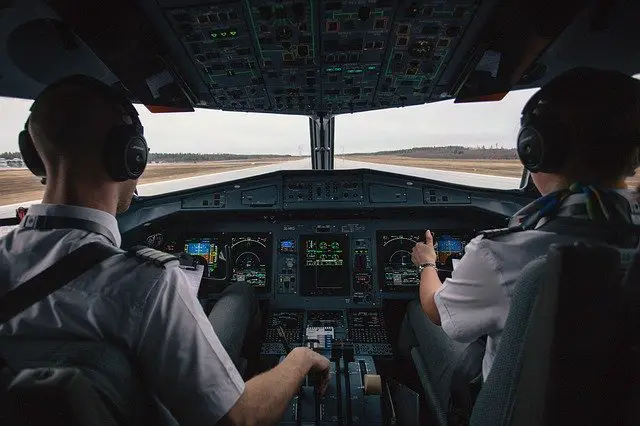
Pete has been flying aircraft for the last 20 years. He has flown everything from light piston aircraft up to heavy jets as both First Officer and Captain. He’s currently enjoying life flying the Airbus A330 for a major international airline.
The Ram Air Turbine, or RAT, on the Airbus A380 is a emergency back up device that will deploy automatically in the event of a loss of all engines, or in case of a serious electrical problem.
Table of Contents

What does the RAT do on the Airbus A380?
The Ram Air Turbine (RAT) on the Airbus A380 is a component in the aircraft’s electrical system.
Normally, an electrical engine-driven generator (EDG) in each engine supplies the electrical system.
Busbars: the electrical system on modern aircraft is divided into separate busbars with related components. For example, an AC busbar serves AC electrical power where it is needed, and in a similar way a DC busbar serves DC electrical power.
During normal operation, the Airbus A380 has four main AC busbars – AC 1 to AC 4, and each is powered by its associated engine-driven generator (EDG).
For example, the electrical generator on engine 1 (EDG 1) supplies the AC1 busbar. Similarly, the generator on engine number 2 supplies AC 2 etc.
The Ram Air Turbine acts as an emergency backup to this electrical system. If the A380 loses all four main AC busbars in flight the Ram Air Turbine will automatically deploy.
Learn How The Ram Air Turbine (RAT) is Used on Aircraft

The RAT is a small propellor attached to the “emergency generator” which supplies the essential AC power busbar (known as “ESS AC”).
The emergency generator can supply all the electrical loads that are necessary for the remainder of the flight, and for landing.
Airbus
Note: following the loss of all main AC busbars, before the RAT and emergency generator have come online, the AC Emergency Busbar (AC EMER) is powered by the “static inverter”.
A static inverter is a way of converting DC power (for example, from the batteries) into AC power.
On approach, as the speed drops below 140 kt the RAT stalls due to insufficient airflow, and the static inverter again supplies the AC Emergency busbar.
When does the RAT deploy on the A380?
The A380 Ram Air Turbine deploys automatically when AC 1, AC 2, AC 3 and AC 4 busbars are lost in flight. This may be caused by engine failure, electrical failure, or a combination of the two.
Video: Airbus A380 Landing with RAT Deployed
Here is a video showing the RAT deployed on an A380 on approach to landing. The RAT deploys from a fairing under the left wing.
Further Reading
A Guide to the Ram Air Turbine on Aircraft
Airbus Safety First Publication
If you found this article interesting please take 5 seconds to share this on your favorite social media. Thanks so much, I really appreciate it! [email protected]
FAQ Summary – Airbus A380 Ram Air Turbine (RAT)
What does the Ram Air Turbine (RAT) do on the Airbus A380?
The Ram Air Turbine (RAT) is an emergency electrical backup device on the Airbus A380. In the event of a loss of all engines, or serious electrical problem, the RAT is used to supply essential systems with electrical power.
On the Airbus A380, when does the RAT deploy?
The A380 RAT deploys after the loss of all main AC busbars (i.e. AC 1, AC 2, AC 3 and AC 4). This could be cause by engine failures, serious electrical problems or a combination of both.
What is a static inverter on aircraft?
A Static Inverter is used to convert DC power into AC power. Often this is used on aircraft as a backup system that that, in the event of an emergency, would allow battery power to be converted from DC to AC and supplied to aircraft instrumentation for example.
What are busbars used for on aircraft?
Busbars on aircraft are a way of supplying groups of electrical components together. On modern aircraft there are usually a number of separate AC and DC busbars. Having separate busbars allows electrical problems to be isolated and critical systems protected.

Pete has been flying aircraft for the last 20 years. He has flown everything from light piston aircraft up to heavy jets as both First Officer and Captain. He’s currently enjoying life flying the Airbus A330 for a major international airline.






